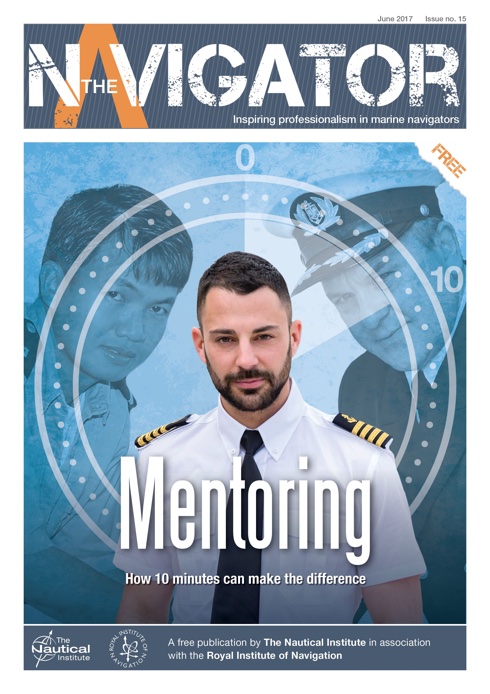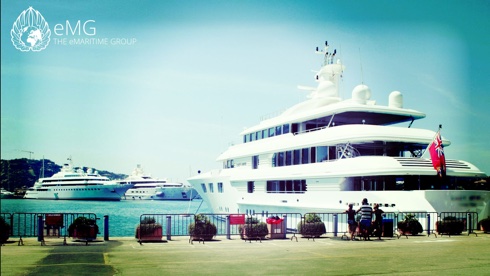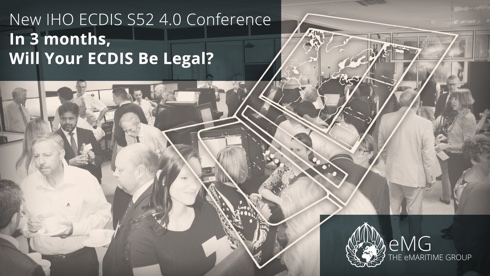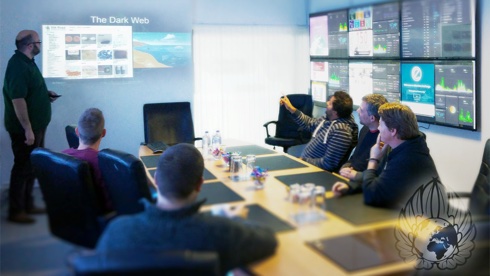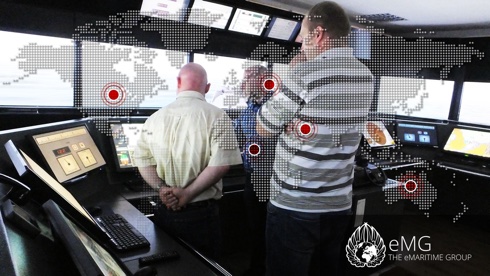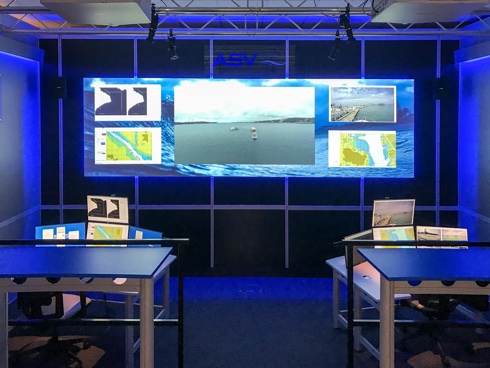IAIN World Congress 2018 second announcement

Get the PDF here.
Flypast for HM the Queen’s official birthday 2017


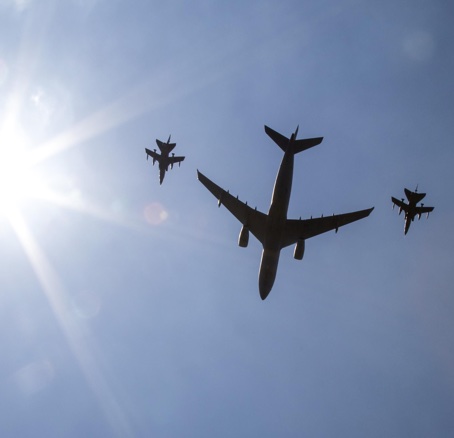
Twenty-nine Royal Air Force aircraft soared over Buckingham Palace, Central London, on 17 June in an impressive flypast to mark the Queen’s Birthday Parade.
Fifteen types of RAF aircraft took part in the flypast, including two of the RAF’s world-class display teams – the Battle of Britain Memorial Flight
(BBMF) and the Royal Air Force Aerobatic Team – the Red Arrows.
This formation flew over the Palace at 1300BST, divided into eight elements, in roughly 30-second intervals.
ECDIS Ltd launch new quick course booking calendar
IAIN Corporate Member ECDIS Ltd have created a new online training calendar, showing all available dates for the key courses in their portfolio and an option to instantly book in seconds, it is reported.
It is understood that the online booking system has been a long time in development. It was created to allow complete transparency for all major courses by providing prospective students with clarification on the availability and flexibility of the company’s training schedule.
According to Robyn Harrigan, ECDIS Ltd Training and Production Manager:
‘We are unlike most training establishments as we are able to accommodate almost any of our courses on dates suitable for our students and clients. This has always proven to be a difficult concept to present on our website as people are used to colleges having fixed timetables.’
Training seminar on the IALA Risk Management Toolbox

The IALA World-Wide Academy, in conjunction with China Maritime Safety Administration (China MSA), will run a training seminar on the IALA Risk Management Toolbox – IWRAP Mk2; PAWSA and Simulation – from 11 to 15 September 2017 at Jimei University, Xiamen, China.
More information can be found in this flyer.
MarineFields and Inmarsat sign MOU
On 7 June it was reported that MarineFields and Inmarsat had signed an MOU to partner in investigating how sea traffic management and satellite connectivity can make port calls more efficient for all stakeholders through improved information sharing, situational awareness, optimised processes, and collaborative decision making.
It is understood that the joint effort will be focused on providing a marketplace for port call optimization services resulting in just-in-time operations and shortened turn-around times.
Perseus PortCDM will connect the various stakeholders involved in, or related to, sea transport, including vessels, shipping companies, ports, terminals, and hinterland operators.
The aim of the project will be to focus on enhanced standardised data sharing,and enable third party providers to bring new and innovative services to keystakeholders in the maritime industry.
Why mentoring at sea matters
The Nautical Institute is focusing on mentoring at sea in the latest edition of The Navigator, exploring how mentoring can, and has, enhanced careers and best practice.
Author Captain Andre Le Goubin contributes an article on how mentoring complements training and why the tradition must be continued. To encourage others to engage in practical mentoring, The Nautical Institute is asking readers to share their stories by e-mailing: navigator@nautinst.org.
Emma Ward of The Navigator: ‘Life works better when we all pull together, and life at sea is no exception. Being able to share and benefit from each other’s knowledge for the good of the entire crew is a wonderful thing and should be encouraged.’
David Patraiko adding: ‘Mentoring doesn’t just improve safety and better commercial services, it also improves life on board. This simple act of kindness can reduce social isolation, help overcome language and cultural barriers and generally improve our working and living environment.’
eMaritime Group offer combined courses for superyachts
Corporate Member of IAIN, eMaritime Group, report that they now offer a range of tailored training packages for the superyacht industry. These packages are discounted bundles of courses, allowing superyacht crew to complete several courses in succession, it is understood.
Courses include ECDIS Generic and HELM (that is Human Element Leadership and Management, either in Management or Operations method) offered at a 20% discount from the standard listed price. These combination courses can be completed at a date which suits the student, and any course combination is possible due to the flexibility of the company’s training schedule.
Arctic campaign to monitor space weather impact
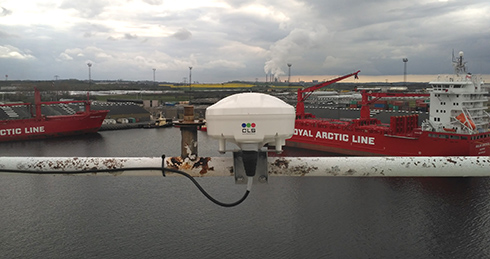
The European project EfficienSea2 has joined forces with Royal Arctic Line to complete the first-ever test of how space weather in the Arctic region influences the full range of a vessel’s communication channels.
When shipping companies deliver cargoes across the world, they depend on a broad range of communications equipment to ensure safe passage and reliable links at sea. The scope of these systems is certain to grow in the future and increase safety in the maritime world.
It does, however, pose a risk with regard to the phenomena of space weather, explained Jean-Jacques Valette, Space Systems Engineer at Collecte
Localisation Satellites (CLS), a partner in the EU funded EfficienSea2 project running a test to measure the impact of space weather. He said: ‘A full understanding of how space events affect our communication methods is essential. The more dependent we become on satellite communications, the more crucial it becomes to prepare for the effects of an outburst of disruptive energy and ejected particles from the sun.’
An evening in the USS Constellation
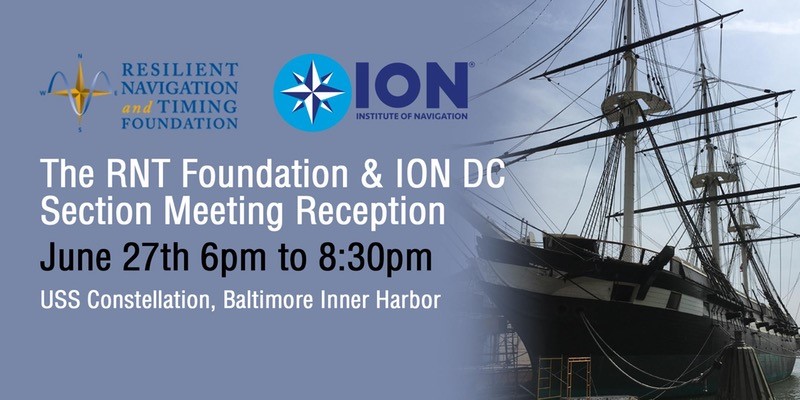
On June 27, there will be a combined meeting of the RNT Foundation and the US Institute of Navigation (ION) (DC Section) from 1800 to 2030. An evening in USS Constellation (managed by Historic Ships) in Baltimore’s Inner Harbor.
The evening will include:
– Guided tours of USS Constellation
– Reception with heavy hors d’oeuvres, wine, and beer
– Presentation by the Father of GPS, Dr Brad Parkinson
– Opportunity to meet leading members of the PNT community from around the world.
Attendees are invited to the public meeting of the US PNT Advisory Board over the following days (28 & 29 June) at the Marriot Inner Harbor Camden Yards.
In three months, will your ECDIS still be legal?
Corporate Member of IAIN eMaritime Group have announced a one day conference to help the industry better understand the transition to the new IHO ECDIS S52 4.0. They ask Will your ECDIS be legal from 31 August?
They invite the industry to meet the manufacturers, express your concerns and opinions and get the answers.
Mark Broster, eMaritime Group Managing Director said: ‘We have spoken to
many of our shipping company clients over the last year about the ECDIS 4.0 upgrade, and listened to their concerns. There seems to be a general confusion and in some cases panic about the changes in August. So we created this one day conference to help clear up these issues and better informing company representatives to allow a smooth transition.’
John Lloyd appointed as Nautical Institute CEO
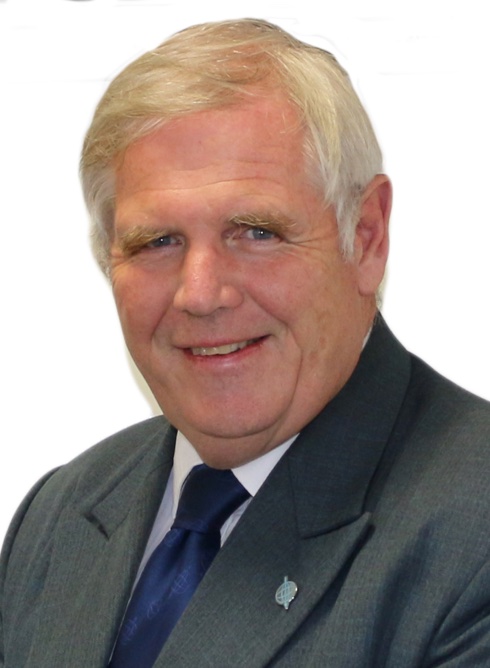
At last week’s Nautical Institute London Command Seminar held at Trinity House on 17/18 May Philip Wake retired after 14 years in post as CEO and was succeeded by Captain John Lloyd.
Speaking at Trinity House, at the third of the Institute’s 2017 command seminar series, Captain Lloyd said: ‘I am delighted to be leading the next phase of development at The Nautical Institute, at a time of great change for our industry. Now more than ever it is important that the Institute champions best practice and professionalism and promotes a culture of safety first.’
In his previous role as Chief Operating Officer, John had overall responsibility for the Institute’ specialised training services, including the industry-standard Dynamic Positioning Operator (DPO) accreditation and certification scheme.
ATSB Traffic management occurrence
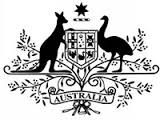
On 14 January 2016, while taking-off from Ballina/Byron Gateway Airport, Airbus A320, registered VH-VQS (VQS) and operated by Jetstar Airways, came in close proximity to Beech Aircraft Corporation BE-76 Duchess, registered VH EWL (EWL). The Duchess was conducting navigation training in the vicinity of the runway and was noticed by the flight crew of VQS during the take off roll and below the maximum speed from which they could stop.
The take-off was continued and while manoeuvring to maintain separation from EWL, the crew of VQS received master warning/caution alerts regarding the aircraft’s configuration. The crew also commenced flap retraction at low altitude and turned contrary to operator-prescribed departure procedures before departing for Melbourne. There were no injuries or damage to equipment recorded during the occurrence.
Lufthansa maritime IT agreement
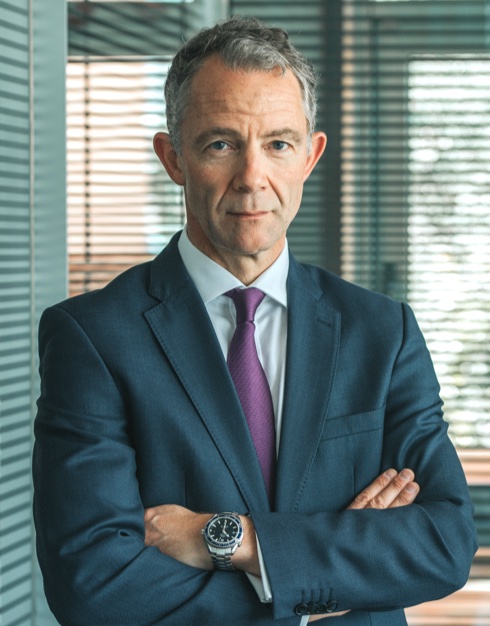
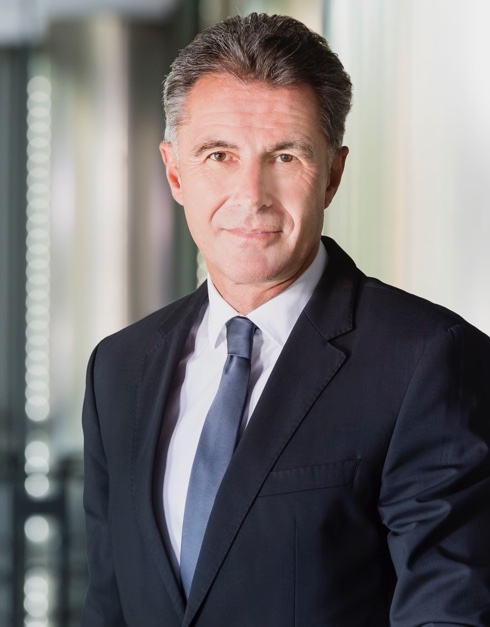
Columbia Shipmanagement together with Marlow Navigation have emphasised their individual commitment to a digital agenda in quality ship management by signing a partnership with Lufthansa Industry Solutions that will pave the way for a new era of advanced thinking in the maritime sector.
This agreement, reported on 19 May, is between Blue Dynamics, an advanced software company previously set up by Columbia and Marlow, and Lufthansa Industry Solutions is aimed at providing the highest standards of information technology relating to performance monitoring, predictive maintenance, remote sensoring, procurement, logistics, crew planning and other important topics such as development resource sharing, lab utilisation and avant-garde development processes.
NATO-EU cyber defence cooperation
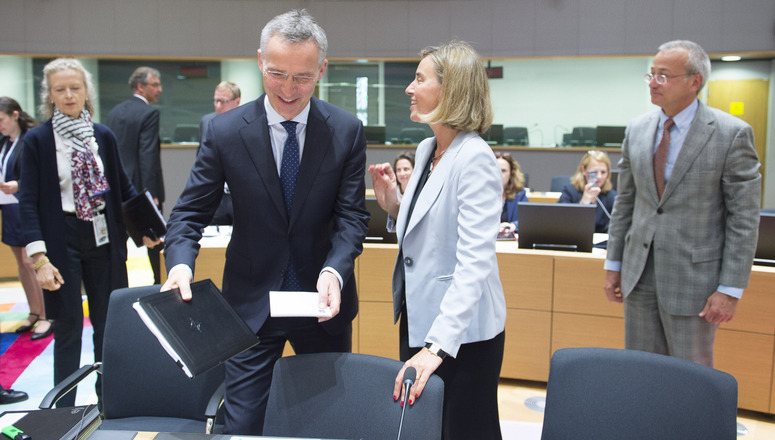
NATO Secretary General Jens Stoltenberg stressed the progress being made in closer cooperation between the Alliance and the European Union in a meeting with EU Defence Ministers on 18 May 2017. He highlighted that this cooperation has reached a new level.
The Secretary General highlighted cyber defence as an example of tangible progress. During the recent ransomware attacks, NATO issued a warning to all Allies, as well as the EU, and exchanged information with the EU. The EU’s cyber security hub CERT-EU has also been granted access to NATO’s Malware Information Sharing Platform. ‘Now NATO and the EU are able to share information in real time on cyber-attacks,’ said Stoltenberg.
The Secretary General and EU High Representative (Foreign Affairs & Security Polocy) Federica Mogherini will report on the progress of NATO-EU cooperation to the Councils of both organisations next month. This cooperation will also be highlighted at the upcoming meeting of NATO leaders in Brussels on 25 May.
UNCTAD signs MOU with MarineTraffic
On 16 May leading global ship tracking intelligence company MarineTraffic and the United Nations Conference on Trade & Development (UNCTAD) signed a Memorandum of Understanding. Under the agreement, UNCTAD and MarineTraffic will be sharing information and data that will enable both organisations to enhance their services and allow for more accurate analysis of global trade and shipping trends.
Geneva-headquartered UNCTAD plays an important role in integrating developing countries into the world economy, with maritime-related research, policy analysis and data collection an integral part of this process.
MarineTraffic currently records 800 million vessel positions and 18 million vessel- and port-related events monthly by tracking ships’ Automatic Identification Systems (AIS) through a network of terrestrial receivers and satellites.
Call for a sustainable future in space
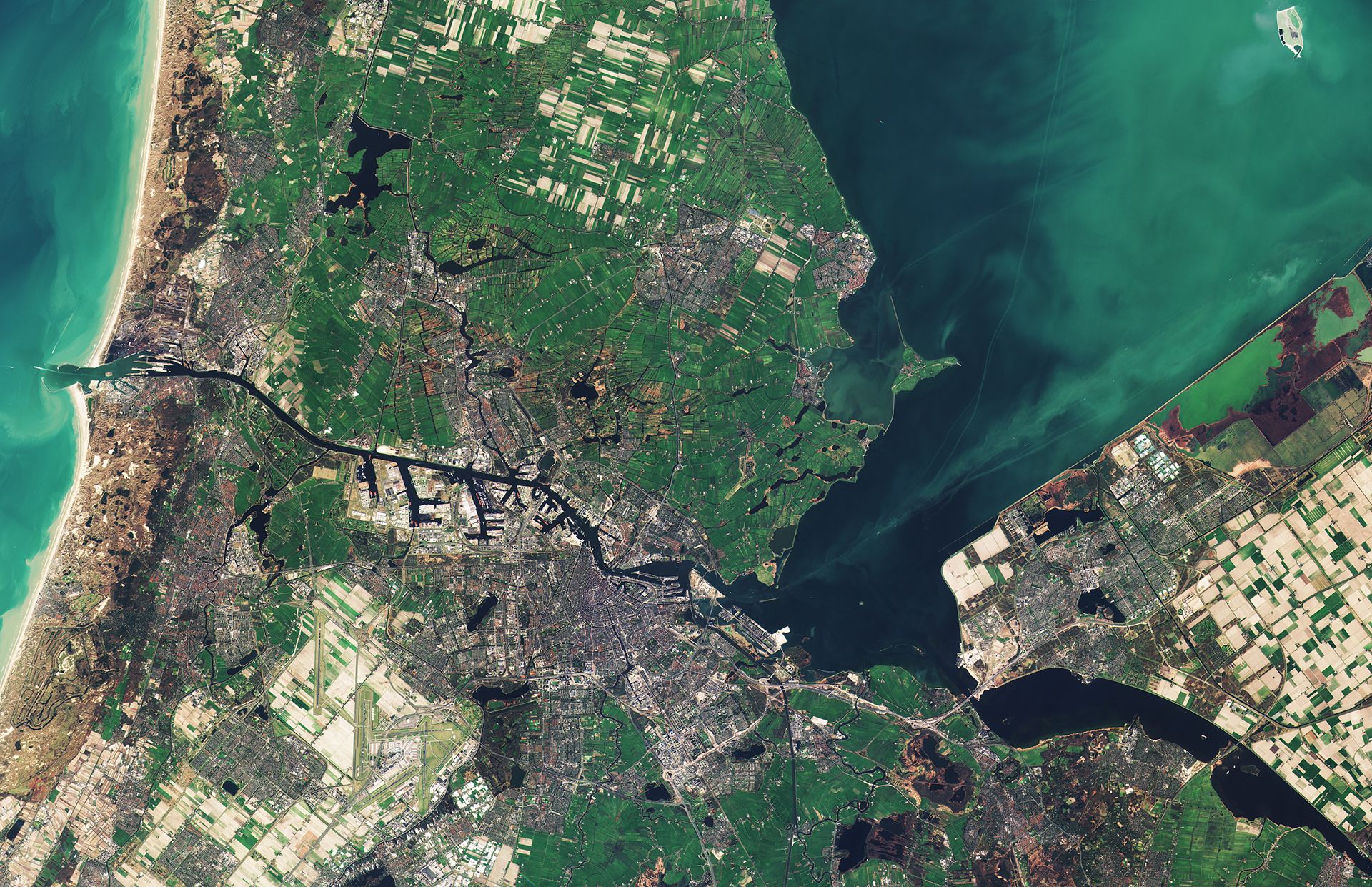
With more than 750,000 pieces of dangerous debris now orbiting Earth, the urgent need for coordinated international action to ensure the long-term sustainability of spaceflight was a major finding from Europe’s largest-ever conference on space debris. This was reported toward the end of April by the European Space Agency, ESA.
In the words of Brigitte Zypries, German Federal Minister for Economic Affairs and Energy, speaking at a press briefing at the close of the European Conference on Space Debris held in Darmstadt, Germany: ‘We require a coordinated global solution to what is, after all, a global problem that affects critical satellites delivering services to all of us.’
ESA Director General Jan Woerner appealed to space stakeholders to keep Earth’s orbital environment as clean as possible. Developing and implementing the ESA Space Situational Awareness (SSA) programme as decided during ESA’s last ministerial council in 2016 will be a key factor.
Frontex, EMSA and EFCA strengthen cooperation on coast guard functions
The European Border and Coast Guard Agency (Frontex), the European Fisheries Control Agency (EFCA) and the European Maritime Safety Agency (EMSA) took a significant step in structuring their cooperation on coast guard functions by signing a Tripartite Working Arrangement as foreseen by the amended founding regulations of the three Agencies of October last year. This was reported by EMSA on 11 May 2017.
It is understood that the agreement sets out the framework for the enhanced synergy between the European agencies which will enable them to support in an effective and cost-efficient way the activities of more than 300 civilian and military authorities in the Member States responsible for carrying out coastguard functions in a wide range of areas such as maritime safety, security, search and rescue, border control, fisheries control, customs control, general law enforcement and environmental protection.
Aligned with their mandates Frontex, EFCA and EMSA will cooperate in sharing maritime information, providing new surveillance and communication services, building capacity, analyzing operational challenges and emerging risks in the maritime domain as well as planning and implementing multipurpose operations.
Two New Cyber Security Awareness (CSA) Courses
IAIN Corporate Member ECDIS Ltd has expanded its 35+ strong training portfolio with two new courses for Cyber Security Awareness (CSA) Operators and for Management. The courses cover a wide range of topics from What is Cyber Security, to Risks of the Internet and Hacking as well as providing a case study from a large American company who staged a cyber attack.
The courses have been developed and delivered to the maritime industry in response to the ever increasing recognition of its impact both onboard and ashore. The effect of cyber attacks can be detrimental not only to company finances due to delay but also to the safety of the crew and passengers.
A new era of digital underwater communications
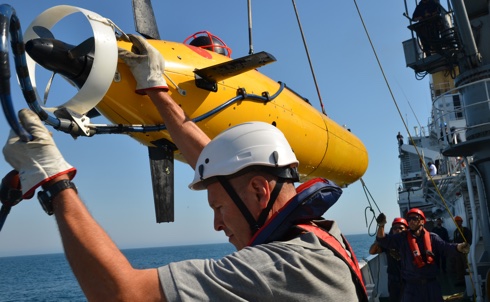
Satellites and mobile phones, built to international standards, help the world get connected. But the communications technology used on land does not work well underwater. With water covering over 70% of the earth’s surface, NATO has sponsored research into establishing the first ever digital underwater communications standard.
Imagine a scuba diver approaching the surface, being made aware of nearby boating activity; or a submarine communicating with a land-based command post; or an underwater robot sending a warning to an oil rig after a leak is detected – the possible applications of underwater communications are many. For example, they could be used in many areas: for harbour protection, maritime surveillance, mine detection, surveying offshore wind farms and pipelines, or even underwater archaeology.
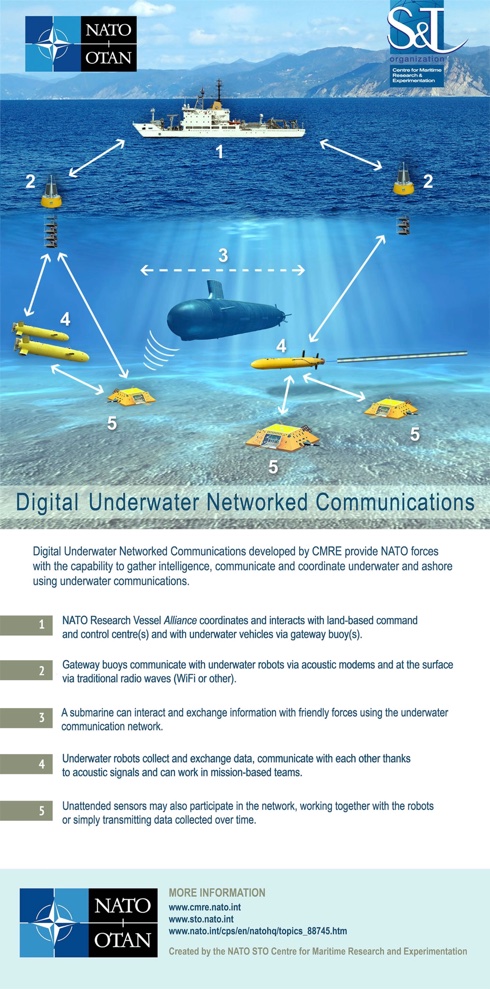
The NATO Science and Technology Organization’s Centre for Maritime Research and Experimentation (CMRE) has developed a standard for underwater acoustic communications called JANUS, which has been recognised as a NATO standard by all NATO Allies since 24 March 2017. This marks the first time that a digital underwater communication protocol has been acknowledged at international level and opens the way to develop many exciting underwater communication applications, it has been reported. To this effect NATO issued a communiqué on 27 April.
Boeing and CSIRO launch 35M research programme
CSIRO has signed a new, $AUD35 million research agreement with the world’s largest aerospace company, Boeing. Over the next five years the organisations will work together on a broad range of areas of mutual interest including space sciences, advanced materials and manufacturing.
This is the latest step in a 28-year partnership between CSIRO and Boeing that has provided a huge boost for Australia in the global aviation industry.
Earlier this month (April), Boeing named CSIRO as a 2016 Supplier of the Year.
CSIRO and Boeing celebrated their respective centenaries in 2016. Over the years the organisations have invested more than $AUD170 million on 190 joint research projects into everything from innovative new manufacturing processes, to fire retardants, biofuels and software.
CSIRO’s Paintbond technology (illustrated), for instance, has been applied to more than a thousand Boeing airplanes, including some in the skies above Australia, saving millions of dollars in maintenance costs.
eMaritime Group Release ACAT Course for the New Transas 4000 ECDIS
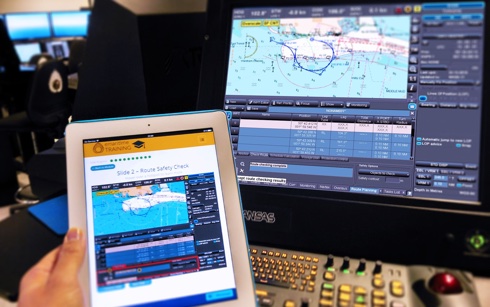
eMaritime Group, part of which is ECDIS Ltd, Corporate Member of IAIN, have further extended their ECDIS Annual Competency Assurance Training (ACAT) portfolio by including a course for the new TRANSAS 4000 ECDIS.
Available online as well as the new offline downloadable version, ECDIS ACAT is understood to be used daily by shipping companies globally.
ECDIS widespread approval
According to IAIN Corporate Member, ECDIS Ltd., five of the seven continents have selected the eMaritime Group as their preferred provider for IMO 6.09 and 6.10 Train the Trainer Courses.
The group have now delivered their MCA Approved Instructor Training Courses (based on IMO Model Courses 6.09 and 6.10) to many colleges and shipping companies from Europe, North America, Africa, Asia, and Australia.
The courses are held at ECDIS Ltd’s head office in Hampshire, UK, and enable students to learn better teaching techniques for both standard and simulator based training courses. Each course is five days in length and covers a wide range of topics from the role of the instructor to teaching methods, communication skills and effective use of teaching aids.
ASV Global’s advanced autonomous vessel mission control centre
On 20 April Mark Garnier, Parliamentary Under Secretary of State at the Department of International Trade, opened an advanced Mission Control Centre created by ASV Global, a leading autonomous vessel technology developer, at its headquarters in Portchester, Hampshire. This new centre will be the hub for the company’s ongoing development of its market leading ASView® autonomous vessel control system. Not only will the centre be capable of operating and monitoring the company’s fleet of ASVs throughout the world using satellite communications but will also be used for operator training and simulation exercises.
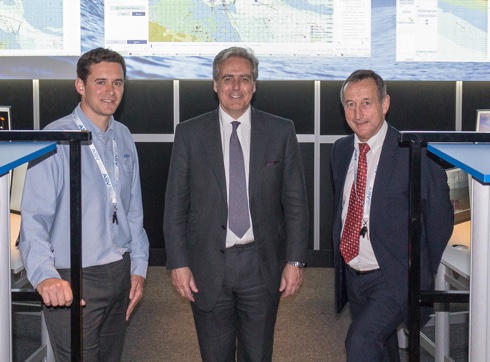
Furthermore, the centre has been partly funded under Innovate UK funding awarded to the company in 2015 under a project called Unmanned Safe Maritime Operations Over The Horizon which tasked ASV Global’s team of autonomous system engineers to research and develop both the technology and the regulatory requirements of operating autonomous vessels over the horizon.
Nigerian wreck removal warning
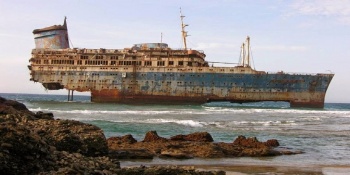
In a bid to ensure safe and secure shipping in Nigerian territorial waters, the Nigerian Maritime Administration and Safety Agency (NIMASA) has warned all owners of abandoned vessels to urgently remove them from Nigerian territorial waters on or before 28 April or risk sanctions ranging from forfeiture or removal by the Agency at the owner’s expense.
Director General of the Agency, Dr Dakuku Peterside stated this recently in Lagos and stressed the need to ensure that Nigeria’s waters remain safe for navigation in order to advance the country’s maritime interests.
He went on to warn that all abandoned ships would be declared as wrecks and the Agency would ensure that nothing impedes safe navigation in Nigeria’s waters.
EUROCONTROL agreement with the European Commission’s CERT-EU on cyber-security
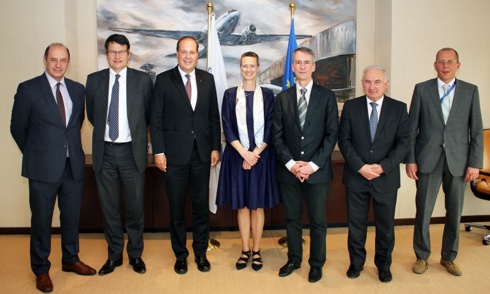 From left: Joe Sultana, Director Network Manager Directorate at EUROCONTROL, Philippe Merlo, Director Air Traffic Management at EUROCONTROL, Frank Brenner, Director General of EUROCONTROL, Gertrud Ingestad, Director General of DG DIGIT, Freddy Dezeure, Head of CERT-EU, Herman Baret, Centralised Services Programme Manager at EUROCONTROL, and Dan Simonic, Chief Information Officer of EUROCONTROL – photo kindly provided by EUROCONTROL©
From left: Joe Sultana, Director Network Manager Directorate at EUROCONTROL, Philippe Merlo, Director Air Traffic Management at EUROCONTROL, Frank Brenner, Director General of EUROCONTROL, Gertrud Ingestad, Director General of DG DIGIT, Freddy Dezeure, Head of CERT-EU, Herman Baret, Centralised Services Programme Manager at EUROCONTROL, and Dan Simonic, Chief Information Officer of EUROCONTROL – photo kindly provided by EUROCONTROL©
On 13 March 2017 EUROCONTROL and the European Commission DIGIT Computer Emergency Response Team (CERT-EU) signed a Service Level Agreement to improve cyber security. On 5 April this agreement was formally presented to EUROCONTROL by Gertrud Ingestad, the Director General of the European Commission Directorate General for Informatics (DIGIT).
CERT-EU’s mission is to support the European institutions, agencies and bodies to protect themselves against intentional and malicious attacks that would hamper the integrity of their IT assets and harm the interests of the EU.
It was further reported that CERT-EU will provide services to EUROCONTROL in order to support the setting up of the European Air Traffic Management Computer Emergency Response Team (EATM-CERT®.
CERT-EU will make available some information and cyber-security tools to EATM-CERT as well as sharing experience, expertise, advice and procedures on how to operate a CERT efficiently.



